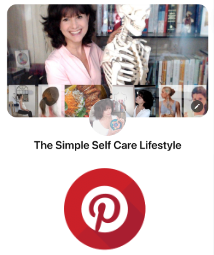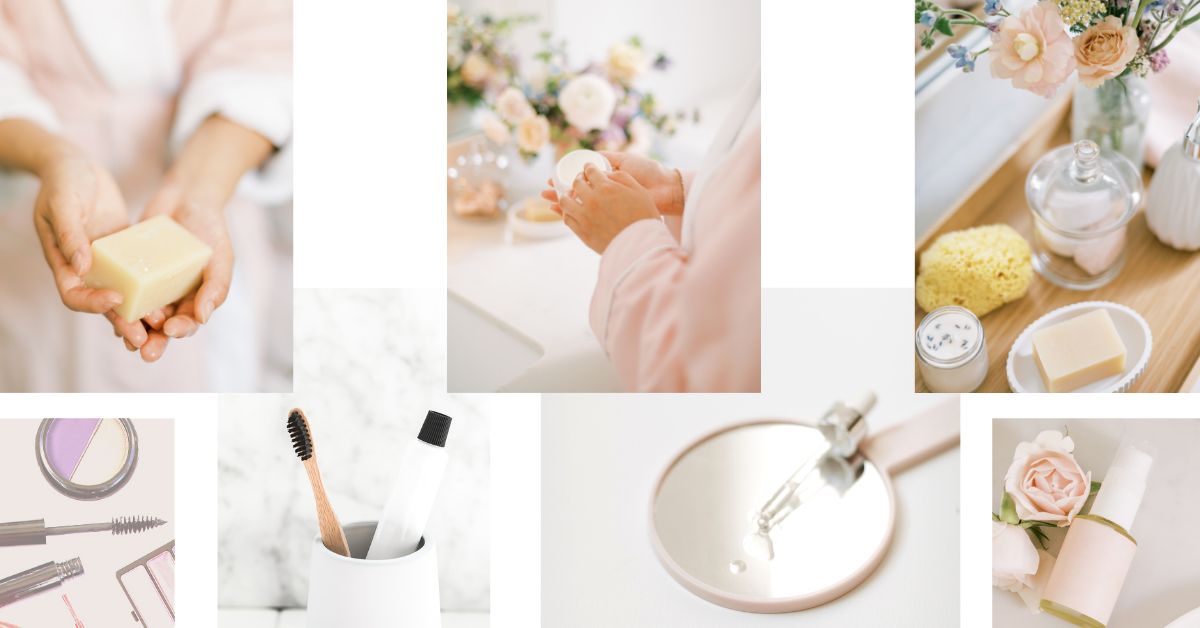How Fat Loss Works: Part 1
Q: How Does Fat Loss Work? What’s the Best Way to Lose My Body Fat?

A: Set your body up to use body fat as fuel. Part 1
To successfully lose body fat, your body must be set up in a way that encourages efficient shuttling of stored fat out of your body’s fat cells to be used as fuel.
The Set Up Needs Certain Metabolic Processes to be in Balance
Knowing about the metabolic processes and how you can influence them will make a world of difference when trying to lose body fat.
Today: Part 1 Setting the Body Up to Use Body Fat Stores as Fuel.
We Will Explore Body Fat Influencers & How to Work With Them:
- First up, the amazing fact: Our Body Fat is an Organ, and how this fact changes everything about the way we want to approach using Fat as fuel.
- A quick overview of HOW our body STORES fat for fuel. So we can Identify some patterns that are promoting more storage. This empowers us to slow the progression while we use what is already stored.
- The 2 top criteria that set our body to USE the stored body fat or NOT.
- Hurdles that keep us from using stored body fat as fuel.
- Focused Actions that help remove these hurdles so we KNOW the Micro Decisions available to us that’ll move us toward achieving our GOAL.
My hope is that sharing what your amazing body needs to have set up in order to efficiently USE your stored body fat will help you to
- have a couple of ah-ha moments
- maybe feel relieved if you’ve struggled with trying to lose excess body fat.
- then, by the end, feel empowered!
Part 2, linked at the bottom of this page, we add: 🔗 How Fat Loss Works Part 2: Adding 5 SIMPLE Actions we can weave into our lifestyle that’ll help signal body fat stores to be used as fuel.
Q: What’s the best way to lose body fat?
A: The best way to lose body fat is to set your body up to USE body fat as its fuel.
A quick note before we begin. We cannot choose where on our body we lose body fat first.
Over time, as the body uses its fat stores for fuel, all the areas, including where we personally want our excess body fat to reduce, will.
A 🚧 BUMMER 🚧 alert
Typically the last area the body reduces its fat storage; especially when it comes to women; is the belly region.
What will often happen, which can be discouraging to many, is our belly will tend to appear bigger as we reduce our overall body fat stores. It is helpful to know this is a temporary situation. 😊 Please do not get derailed! Keep going.
I will explain how and why this happens in an upcoming post/video for you.
Get updates from
The Simple Self Care Lifestyle
Now let’s jump into the amazing body fat fact.
Our Body Fat is an Organ.
“Though it was once considered a mere energy storage site, AT (Adipose Tissue is made up of fat cells) is now considered an important endocrine organ and site of inflammatory cell signaling that governs not only survival but also plays critical roles in reproduction and in glucometabolic homeostasis.” (1)
What does this mean?
This means your body fat isn’t a storage container where fat only shuttles in and out, dependent on caloric deficit alone.
Your body fat is instead an actual functioning organ.
As with all your other organs, your body fat organ is involved in many aspects of your well-being.
Listing just a few influences your body fat has AND is also influenced by:
- inflammation response,
- hormonal balance,
- blood sugar balance.
Bottomline We Want to Work With The Body Fat Organ
Working with the Fat Organ helps us Leverage the Way The Body is Set Up to Work so we can Layer on Micro Decisions that lead us to Achieve our GOAL. (The exact premise everything on The Simple Self Care Lifestyle is built around.
HOW our Body is Set Up to Store/Use Body Fat For Fuel
The Biggest Influencer, the deciding factor as to whether or not stored fat will be released to use as fuel, is our blood sugar.
Blood Sugar is Where We Start
Blood sugar is where we start because it is the deciding factor of whether or not your body will give up its fat stores easily or NOT.
Don’t shy away from the words blood sugar. Influencing the blood sugar for body fat loss signaling is a matter of paying attention to 2 things:
- Is there enough time between when you eat or drink something and
- What is YOUR best form of snack?
These two will change as you lose body fat. This is because the Body Fat Organ itself plays a role in:
- signaling stress hormones that slow fat use
- appetite, as well as other hormones.
As your fat stores shift, so too will the above items. This leads to more ‘cell flexibility’, allowing for more leeway to the need to pay attention to the timing and type of snack. This is a BIG influencer of why 2 people eating the same calories in calories out can have dramatically different results (Post 2)
I bring this up again to emphasize that YOUR setup and lifestyle choices that’ll help you achieve your goal of using excess body fat as fuel will be fluid.
Someone else’s plan will never be as effective as you doing the foundational groundwork that helps you identify what works FOR you, YOUR body.
Simply keep in mind that as you continually make One Good Micro Decision after another using anything on The Simple Self Care Lifestyle, you will ALWAYS be improving your body’s setup to use Fat as Fuel.
Tracking Good Micro Decisions is a great Motivator, especially when getting started. For this reason, I’ve had an APP created. It is a FREE Self Care Tool for you- from me. This way, you can see all the Good Micro Decisions you are adding up toward achieving your goal.

The Simple Self Care Lifestyle
MOtivator APP
All your Simple Self Care Micro Decisions add up in a way that supports your body’s willingness to use body fat as fuel because a balanced body is efficient at using its body fat stores.
A balanced body doesn’t hold on to fat stores too tightly NOR does it give up fat stores too quickly.
As you progress in balancing your insulin, it will get easier and easier to work with your body with less effort. This successful progress all relates back to the foundation of The Simple Self Care Lifestyle. The 1 GOAL, 1 FOCUS, 1 Micro Decision at a time.
THe simple self care lifestyle
Simplify
If you are counting calories and feeling frustrated, you will find this FOCUS helpful.
Influencing your blood sugar timing is simple (maybe not easy at first- but it is simple).
With a bit of awareness about blood sugar and its impact on stored body fat, we can, in a very powerful way, feel good about incorporating today’s information right away.
Body Fat Storage is Promoted By The Amount of Circulating Insulin
Let’s break this down. Our organs (including stored body fat) make up our body systems.

Body fat is part of our endocrine system. It is influenced by and influences other systems with hormones.(3)
Your body fat is sending messaging out and receiving messages.
These messages include the directions to:
– Shuttle fat into storage.
– KEEP the fat cell gates closed to preserve its fat stores.
– Open the gates of the fat cell when it’s okay to use body fat stores as fuel.
Knowing fat cells are an organ that influences and is influenced by hormonal messaging is key when it comes to how we try to lose body fat.
How we are set up to STORE Body Fat helps us make sense of how we can set ourselves up to use it.
How we are set up to store fat matters when it comes to our efforts of trying to use the body fat we already have.
Collectively all our CELLS need a certain amount of calories for energy. To fulfill that need, we eat.
Our digestive juices help break down the foods we eat into recognizable molecules for the body to use.
Then here is what happens:
- The body immediately uses some of the food molecules as energy.
- Stores a small amount in your muscles and liver for quick access.
- The excess is converted into triglycerides (the name for fatty acids) and
- The triglycerides (fats) are shuttled into your body’s fat cells to have as a backup source of fuel.
When we eat, the levels of circulating insulin in our bloodstream increase.
When circulating insulin goes up, the body will NOT use stored fat as energy.
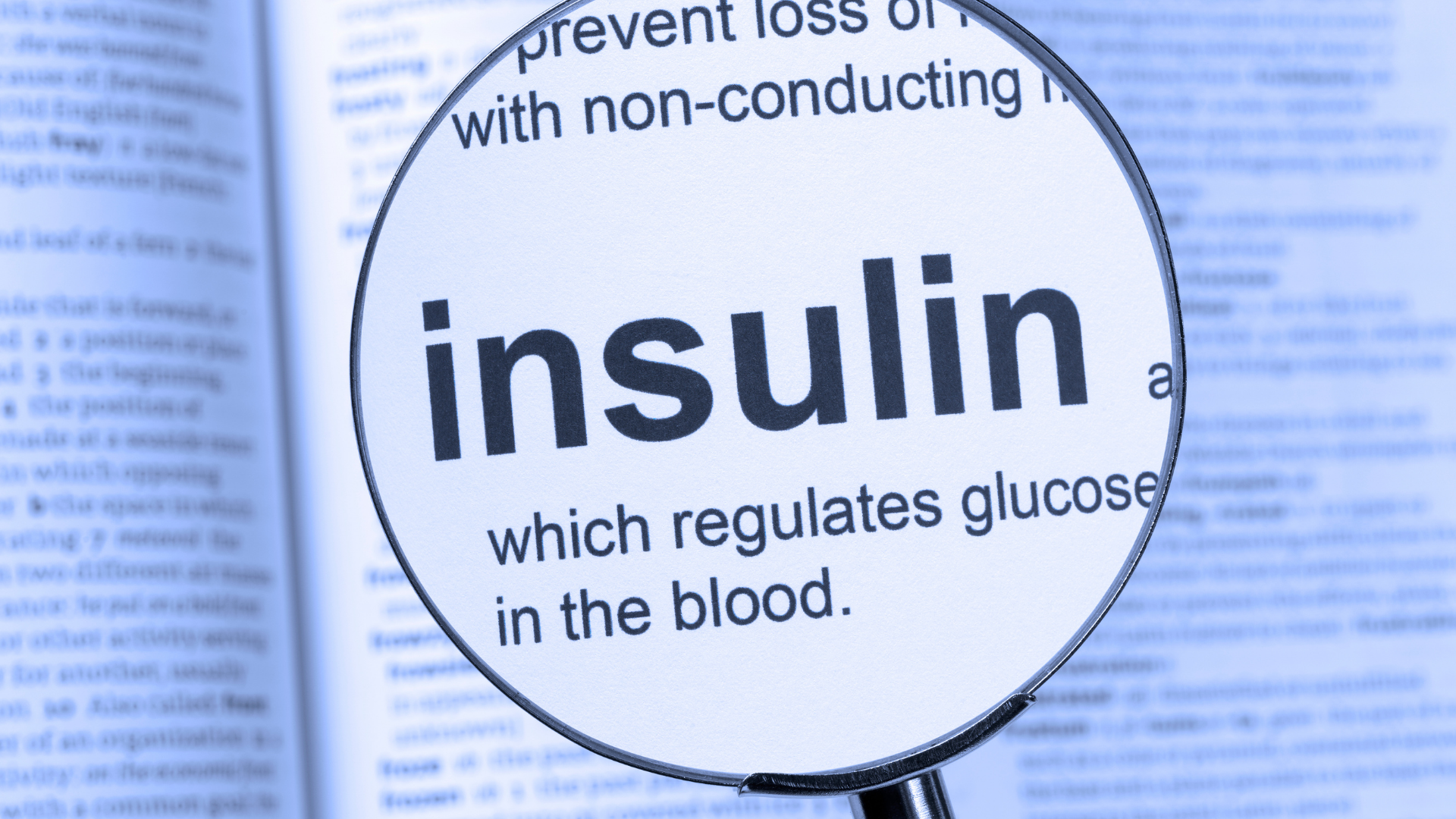
While we are eating, the increased circulating insulin messages our body that:
- we are taking food in,
- digesting, distributing, and
- converting it, so it is not the time to release fat.
Circulating insulin, which rises when we eat, dictates what’s to be used immediately and what’s to be shuttled into fat cells.
After we finish eating, as time passes, our circulating insulin slowly reduces.
A hormone called hormone-sensitive-lipase then signals our fat cells it’s okay to use stored fat as fuel.
Quick little Re-Cap
Insulin helps move glucose into cells. Your cells use glucose for energy.
Your body first stores a little extra glucose in your liver, muscles, and the excess shuttles into your fat cells.
Once glucose moves into your cells, your blood sugar level goes back down and signal another hormone called hormone-sensitive lipase.
Hormone-sensitive lipase signals our fat cells that we can open the ‘cell gates’ to slowly use our fat stores as fuel.
That’s The Sweet Spot!
Hormone Sensitive Lipase signals our fat cells that we can use fat stores as fuel!
We leverage this knowledge to work with the body and pay attention to the time between meals. Was there enough time for the insulin to drop long enough for Hormone Sensitive Lipase to signal?
That’s Our FIRST FOCUS for Fat Loss
The first FOCUS is to increase the time between eating so Hormone Sensitive Lipase can signal our Fat Cells to Release fat molecules for fuel!
I hope you can see why doing this first is helpful and reduces frustration. Knowing that when circulating insulin is too high, everything else we put effort into, like counting calories, and diets of all kinds, will be loads of effort with small returns.
They ONLY work well when Hormone Sensitive Lipase is already signaling our fat cells.
Focusing on the timing between eating is the key. This is different than fasting. It is finding YOUR sweet spot. The initial time frame you feel you can go may be small. That’s okay. It is your start spot.
Slowly increase the time between meals so that you are comfortable and avoid sugar that is too low. Sugar that is too low is counterproductive.
Our goal is not to see how long we go but to find the space between meals that works for our bodies.
Isn’t that exciting! Leveraging and layering, leveraging and layering how our body works the absolute best way to achieve our health, wellness, and fitness goals.
Re-Cap Body Fat Releases When Circulating Insulin Lowers.
Store Body Fat
High levels of circulating insulin in our bloodstream give our body the signal to:
- move and store excess triglycerides (fat) in our cells.
- It also messages our cells to hold on to the stores we already have.
Release Body Fat as Fuel
Low levels of circulating insulin allow our other hormone (hormone-sensitive lipase) to:
- Signal to the fat cell it’s okay to release the stored fat cells.
Want to Gain Body Fat Stores?
Eat and graze all day. You can eat healthy and help your body gain body fat stores. If you make sure there is not too much time between your foods, your:
Increased circulating insulin helps store body fat.
Helps keep what is stored from being used.
How Your Body Is Set Up
- 2 hormones at play are:
- insulin and
- hormone-sensitive lipase,
- Insulin signals the body to hold Fat Stores
- Hormone Sensitive Lipase signals to release Fat Stores
We Can Influence Each.
Knowing this is empowering. How so? Well, once we know how it is set up to work, we can set ourselves up to influence our circulating insulin and hormone-sensitive lipase levels to enable excess stored fat to be used as fuel.
The body needs 2 things to USE body fat.
For the hormone-sensitive lipase to signal it’s okay for our fat cells to release our stored fat molecules for fuel, there are criteria that must be met:
🔸 1. low circulating insulin
🔸 2. a caloric deficit.
When there is a reduced level of circulating insulin it is picked up by the hormone sensitive lipase which signals to your body it is okay to USE stored fat molecules. (2)
When there is a caloric deficit and low circulating insulin, fat stores can be released to be used as fuel.
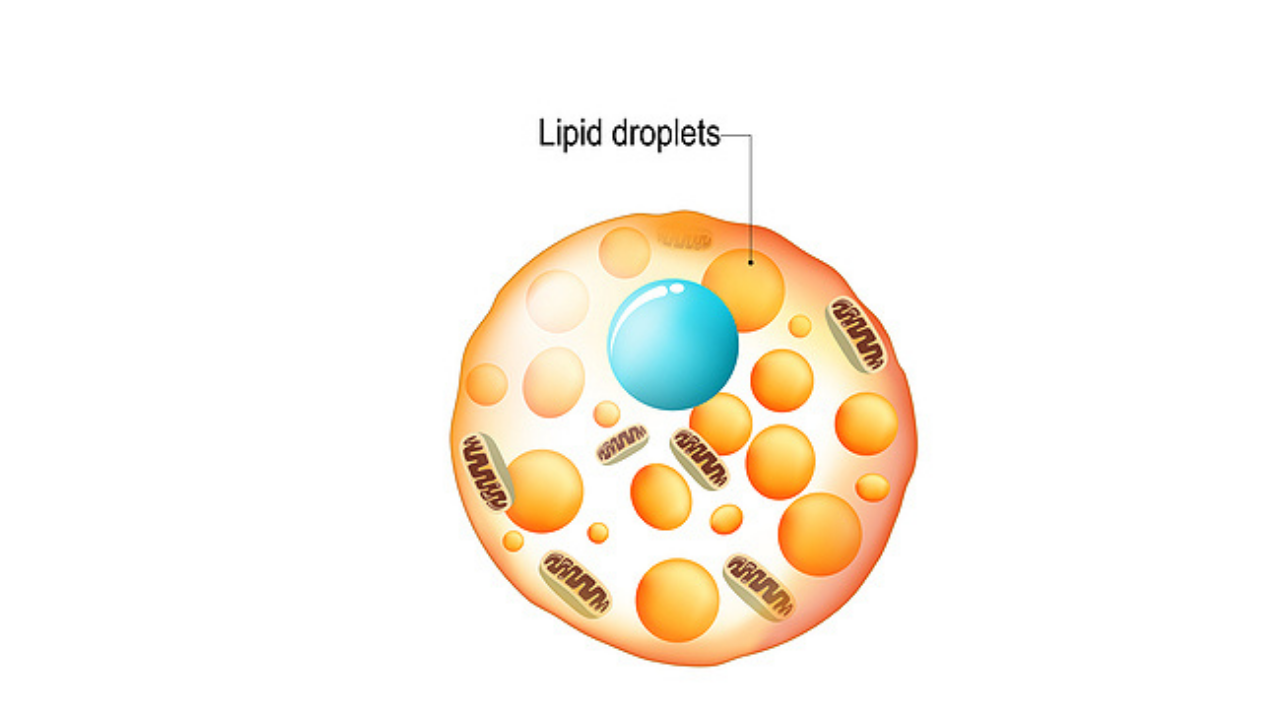
Fat droplets remain stored until a message from hormone-sensitive lipase signals it is okay to release fat. When the Hormone-sensitive lipase is received by your fat cells, they- open the gates and allow fat molecules to be shuttled out to be used as fuel.
This is the case until you eat or drink something again that increases circulating insulin.
When the insulin circulating in your bloodstream rises again, the signal to stop using fat for fuel is sent out.
This magnificent communication between hormones is amazing.
You don’t even spend time thinking about it. You eat, digestive enzymes work to break down what you’ve eaten, your hormone insulin comes out, molecules are shuttled to be used as energy where needed, the excess is converted into triglycerides and stored.
What happens next is your circulating insulin levels lower. Over time your body will need more energy. Your Hormone Sensitive Lipase begins its job.
It signals your fat cells that it’s a good time to release the backup fuel source for energy.
As Dr. Jensen endocrinologist specializing in obesity, succinctly puts it:
“You need your energy in energy out to work really well. Your fat cell has got to be able to store fat when it’s there and it’s got to be able to let it go when it needs to let it go.” (3) – colors added
Body Fat IN.
- Eat
- The body fat ORGAN senses that the hormone insulin is increased due to the amount circulating in your bloodstream.
- Small portions of EXCESS are shuttled into muscles and liver
- Excess calories are shuttled into your fat cells to store.
Body Fat OUT.
- The amount of circulating insulin recedes.
- Hormone-Sensitive lipase kicks in.
- Fat cells let go of the stored body fat to be used as fuel.
The biggest influencer of your body’s use of excess body fat stores for fuel is the level of circulating insulin hormone.
The hormone insulin is where we want to place our focus on.
The very first 🎯 focused action to take is slowly increase the time between eating.
Hurdles- NOT lack of willpower keeps many from successfully using excess stored body fat as fuel.
4 hurdles that compromise using body fat as fuel. They are hurdles because each promotes increased circulating insulin.
It’s Hurdles- NOT lack of Willpower or Motivation that keeps many from successfully using excess stored body fat as fuel.
I can assure you, after 4 decades in the wellness field, that it’s not a lack of motivation, willpower, or adherence that keeps most from achieving their goal of losing body fat.
Instead, it’s a few hurdles.
Hurdles that you may not even know exist.
Once you are aware of the hurdles, you can remove them.
Removing them will enable you to set your body up to use and lose body fat stores.
I am going to lay out 4 of the most common hurdles today, along with the focused actions to remove them.
The following are the 4 top hurdles that slow or impede the release of stored body fat.
Each compromises body fat use because all 4 promote an increase in circulating insulin.
The great news: we can influence all of them with one Good Micro Decision after another. Any Micro Decision on The Simple Self Care Lifestyle supports your end GOAL.
Let’s look at the 4 hurdles.
4 Hurdles that impede fat loss:
Hurdle 1. High Carb Foods or Constant Snacking throughout the day.
Each time we eat, circulating insulin goes up. Higher-carb foods increase circulating insulin more than protein and fat. Post-eating insulin keeps the hormone-sensitive lipase from signaling the fat cell to release stores.
When eating meals/snacks close together, our insulin remains too high to ever give hormone-sensitive lipase a chance.
To decrease fat stores:
1. Focus your efforts on spreading out meals and avoiding grazing throughout the day.
As your body adapts to longer times between meals, your messaging improves all the way around. Your body and brain will be happier as well as you’ll feel more satisfied with meals.
2. Avoid:
Higher carb meals and constant grazing. Why? Because both keep insulin circulating at higher levels. This means hormone-sensitive lipase will not be able to signal to the fat cell to use its stored fat.
A constant s-l-o-w source of energy keeps your fat cells willing to give up stores.
Your cells want and need a constant, slow energy supply. Optimally we pull on our fat stores between meals.
If your cells are unable to pull a steady supply of fuel from your fat cells due to high levels of circulating insulin or fast plummeting of insulin, they solicit help.
This is when more hormones get involved.
The other hormones drive you to find something to eat immediately. Your brain wants fast sugar. This is why your desire to eat seems uncontrollable.
Your body is actually trying to protect you/your brain. In this circumstance, you cannot imagine feeling well by spreading the time between meals out further and further.
You end up snacking more and more.
Most often, the snacks are carbs, sugary drinks, or caffeine, anything to get some more QUICK fuel.
There is never enough time for the hormone-sensitive lipase hormone to signal the release of fat from fat cells.
Sometimes though, this is not obvious. Here is an example.
Let’s look at the scenario I heard often when it came to those wanting to lose body fat:
—mo, I get up and eat a healthy bowl of oats. About an hour later, I’m already hungry again. I have a healthy banana sliced on some toast, maybe some almond butter. I drink some almond milk. Often a cup of coffee. A short time later, I feel like I have to lie down. If I can’t lie down, I have another coffee, maybe with a piece of toast.
My snacking begins around 11.
I need something else to eat. Because I’m being good about calories, I choose to eat, let’s say, carrots. I choose carrots since they are low-calorie.
By lunchtime, I’m starving.
Typically I have a bagel sandwich and veggies or salad and 1/2 sandwich. I hardly get through to 4 pm, but I try and wait to have a snack and coffee.
This gets me through till supper.
Following supper, I’ll have a small dessert or a nighttime snack. I ALWAYS stay within my allotted calories. Even with all this effort of grazing and staying in calories, I still don’t lose my fat. What can I possibly be doing wrong?
What signaling is going on?
First, when the feeling is there that there is a need to lie down shortly after eating you might want to tally the amount of carbs you are eating. It sounds like from breakfast on insulin went up and then plummeted. This created an emergency need for more sugar no time for hormone-sensitive lipase to kick in. And it continued.
The carrot promoted increased insulin circulating back into the bloodstream. Because it was so close to lunchtime, there was not enough time for insulin to taper enough for hormone-sensitive lipase to then kick in.
Every time we eat, our insulin is increased so it can do its job. The amount it increases is dependent on the food type.
A low-calorie food can be a high-carb food.
A low-calorie food that is high-carb can be a fat-loss hurdle for calorie counters.
When you depend on low-calorie but high-carb foods to hold you over until the next meal, you keep insulin circulating, and body fat will not be used as fuel.
PLUS — because the ‘healthy’ LOW-CALORIE snack did not offer the satiety or the slower source of energy that a food choice like protein or fat would have, you feel the need to snack again.

I’m NOT saying carrots are bad.
I’m sharing that Carrots’ high sugar content ends up increasing our circulating insulin so that hormone-sensitive lipase can’t continue to signal our fat cells to use the stored fat source-Changing snacks to protein might change everything for this person. It is a great starting point to explore.
See how valuable knowing how your body is set up to work can be. Here is a great example of ‘being good’ snacking on carrots to keep the calories down ends up sabotaging your efforts. But no more now, you know!
Bottomline, the Timing & Food Type Matter
When it comes to the timing of your snacking, as well as choices of snacks throughout the day — BOTH will determine your level of circulating insulin.
Your circulating insulin determines if your body holds onto or uses body fat for fuel.
This is how fat loss works.
Choosing snacks high in healthy sources of Protein or Fat – while staying at the same calorie level– will help you achieve your goal of using fat stores.
Remember, the opposite is true if the choice is for high-carb (even if low-calorie) snacks.
Lower Circulating Insulin then Calorie Deficit Can Work
Calorie counting is EXTREMELY important BUT just as important is your level of circulating insulin when it comes to your goal. (1)
This is why the eating scenario I shared above doesn’t work when it comes to fat loss.
Throughout the example day, there was never enough time for the insulin to lower long enough for the hormone-sensitive lipase to signal to the fat cells to use fat.
This is FRUSTRATING because calories were within the client’s recommended range for losing body fat.
Reducing chronic high insulin takes time. But it is time well spent. This is because it is the way to help set your body up to lose excess body fat
When your goal is to lose body fat, the focus that will support your goal the most is to slowly transition to:
- enjoying unprocessed protein and healthy fats for breakfast, (5)
- increase excellent sources of protein throughout your day. (6) at each meal while reducing snacks slowly.
- re-evaluate every couple of weeks. Continue increasing good fats and proteins at each meal within your caloric range for fat loss until you are comfortable at 3 meals per day.
🎯 Focused Action:
Space out your meals. Also, try to arrange that each meal provides you with the best-unprocessed protein that works with your budget, a good fat source, and a small portion of carbs that work well for your digestion.
This is how you will set your body up to lose fat.
Self Care TIP
Avoid inadvertently raising your circulating insulin by beverage choices that can derail you.
Flavored drinks, juices, and protein powders (to name just a few) often make your goal harder to achieve. Maybe choose HIGH-Quality Teas. (Brands with zero plastic), Mineral Water. (Not flavored or carbonated water).
The flavored stuff may be tolerated well later when your cell is more ‘flexible,’ but for now, when you are focused on setting your body up to use body fat as fuel, these details can sabotage and frustrate you.
Done consistently over time, your high circulating insulin will have a chance to decrease.
This means your hormone-sensitive lipase will have the chance to signal your fat stores it is okay to open the gates for fat stores to be used between meals as fuel. It is how fat loss will happen.
RE-CAP of Hurdle 1: Higher Circulating Insulin
Hurdle 1: Higher circulating insulin keeps you from accessing your slow, sustainable source of energy (fat). It impedes fat loss by:
- pushing you to crave more food.
- promoting poor mood,
- being tired,
- making you feel run down and that simple things feel hard to accomplish
- Creating a sense of brain fog; difficulty paying attention.
It can even be contributing to AND a result of the remaining 3 hurdles.:
Hurdle 2: Chronic Stress

Chronic stress elevates the stress hormone cortisol.
Study after study points out:
Elevated Stress Hormone Cortisol promotes increased insulin.
‘….elevated cortisol, over the long term, consistently produces glucose, leading to increased blood sugar levels.” (7)
” the body remains in a general insulin-resistant state when cortisol levels are chronically elevated….Over time, the pancreas struggles to keep up with the high demand for insulin, glucose levels in the blood remain high, the cells cannot get the sugar they need, and the cycle continues.” (2)
“increased stress hormone of cortisol promotes increased insulin.(9)(3)
This ongoing scenario will promote
Increased insulin promotes increased fat storage and decreased fat release from stored fat cells.
“…that serum cortisol is positively correlated with waist circumference among male and female subjects, supporting findings that repeated or chronic stress plays a potential role in the development of overweight and obesity.”(11)
Because our body is integrated and interconnected, the disruption of hurdle 1 and hurdle 2 literally set up hurdle 3.
Hurdle 3 Insufficient or Ineffective Sleep

Higher levels of insulin can disrupt your sleep. (10)
When it comes to fat loss, it is helpful to wean yourself off eating right before bed.
The reason for this: regularly eating before bed has been shown to decrease the amount of good sleep you experience.
The same holds true for alcohol.
Why? Alcohol increases insulin.
Over time ongoing lack of good sleep increases blood sugar. A vicious cycle begins. More and more, your higher blood sugar levels will negatively impact your sleep; your poor sleep will negatively impact your blood glucose.
“Sleep disorders and the development of insulin resistance and obesity.”(12)
Increased circulating insulin keeps the body from using fat stores as fuel.
“Derangements in sleep also affect glucose homeostasis and appetite control. Impaired sleep thus might contribute to the rising prevalence of type 2 diabetes and obesity in modern society.” (13)
Fat Loss Hurdle 4
Hurdle 4 Hypothalamus inflammation
“… hypothalamic inflammation was reported to affect hypothalamic hormonal (e.g., leptin and insulin) signaling to cause central dysregulation of energy balance leading to obesity development. Your hypothalamus is located in your brain and helps to stimulate and regulate temperature, weight, emotions, sleep…”(14)

How does Hypothalamus inflammation occur?
Overeating. Chronically overeating stresses our cells. This creates imbalances throughout all out systems. (1 GOAL, 1 FOCUS, Micro-Decisions)
THe simple self care lifestyle
Simplify
The Hypothalamus produces hormones, one of which is insulin.
“hypothalamic inflammation, which may result from overnutrition-induced intracellular stresses or disease-associated systemic inflammatory factors, extracellular and intracellular environments of hypothalamic cells are disrupted, leading to central metabolic dysregulations and various diseases.”
Specific 🎯Focused Action You can take to reduce this High Insulin Hurdle:
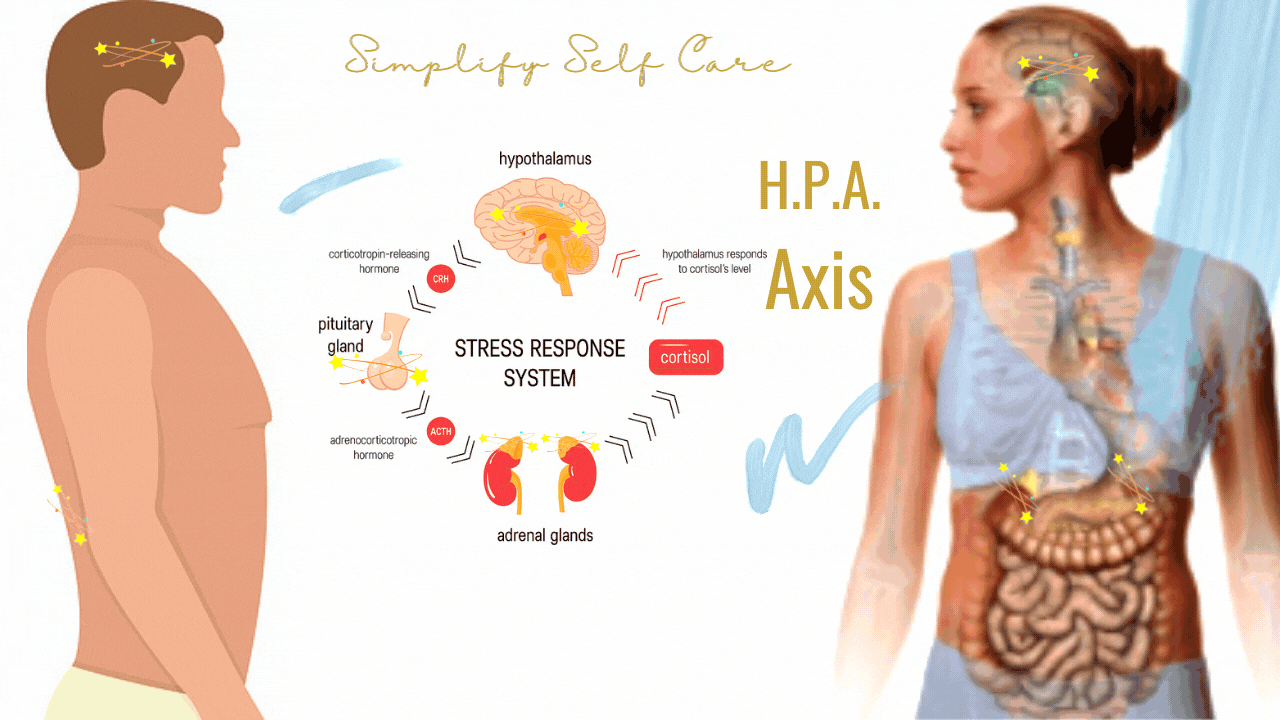
👉🏼 Train your HPA Axis. It’s SIMPLE.
👉🏼 Use the 2 relaxation techniques and background music.
👉🏼 Each PM use guided relaxation and calming background music while you sleep.
Reducing your stress loop and strengthening your relaxation loop will = more body fat loss
As your relaxation loop retrains and your cortisol levels out, you’ll find your ‘need’ for food right before bed will diminish.
Weaning off eating before bed helps improve your sleep. Improved sleep helps set the body up to use more fat stores as fuel.
Improved sleep helps cortisol levels.
Cortisol levels that are optimized mean circulating insulin is optimized.
Optimized insulin means insulin-sensitive lipase has more opportunity to message fat cells that it is good to release and use stored fat as fuel.
The bottom line:
To LOSE body fat, you FIRST set your body up to USE stored fat as fuel.
The 4 common hurdles that keep your body from using body fat as fuel even when your calories are in a deficit have something in common. They all promote high levels of circulating insulin.
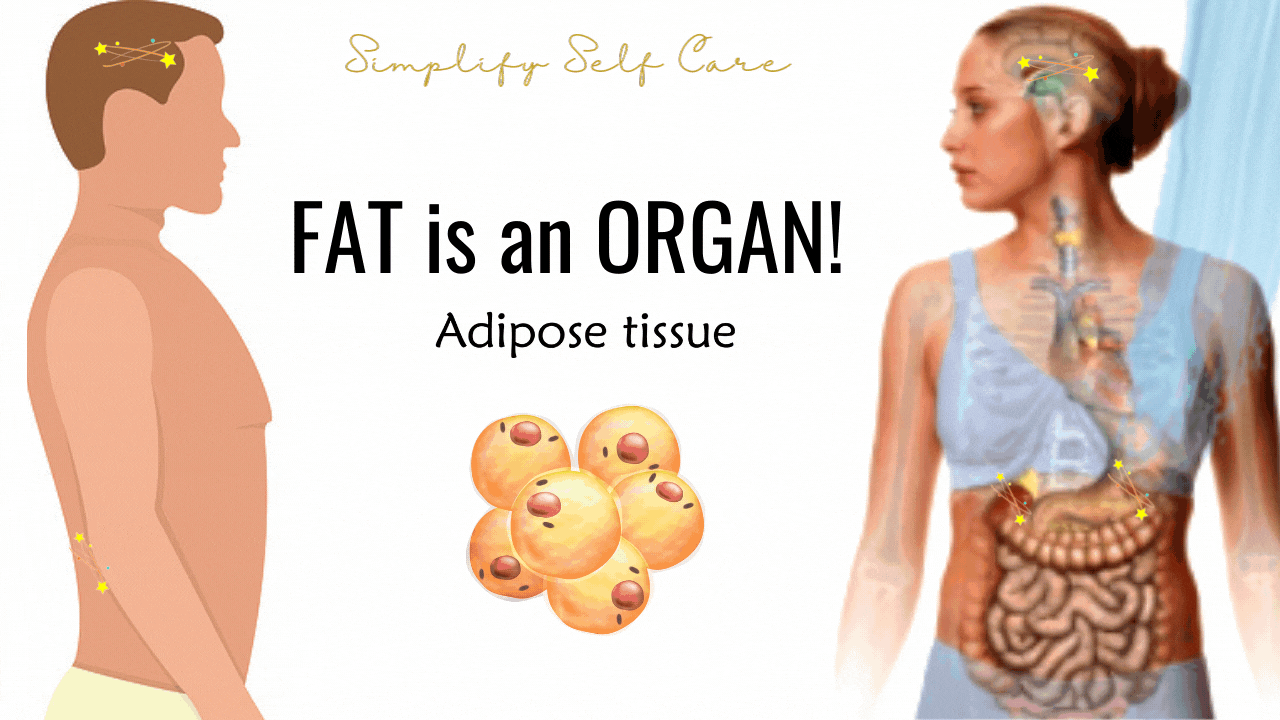
Addressing them with the simple, focused Micro Decisions will help you reduce the high levels of circulating insulin, allowing hormone-sensitive lipase to signal your fat cells to open the cell doors and let the stored fat out to be used as fuel.
The Take Away:
Our Body Fat is an Organ. It is part of our Endocrine system.
The Body Fat Organ sends and receives hormone messages.
These messages dictate how we use body fat.
Reducing circulating Insulin so hormone-sensitive lipase can direct the body to use the body’s fat stores as energy is the key.
The First 3 Steps:
— SLOWLY move from high-carb meals and snacks to meals that are focused on –still getting the right amount of calories for your needs– but more unprocessed protein and the best quality fat that your budget allows with smaller portions of carbs.
-Begin to increase the time between meals (SLOWLY). As you increase the time your body will have more opportunity to make sure circulating insulin comes down and Hormone Sensitive Lipase signals fat cells to release fat molecules to be used as fuel.
— Use the HPA Axis videos during the day and PM to help reduce other hormones that are slowing down your body’s willingness to give up fat stores.
-When you are ready, explore Set the Body Up to Use Body Fat as Fuel Part 2.
You’ve got this!

I’ve Linked Todays References For You Further Down
The Simple Self Care Lifestyle
Post category
MOTION
Mobility, Exercise, Fitness
Post category
EMOTION
Mindset, Motivation, HPA Axis...
Post category
NUTRITION
Providing our Cells with what they need.
Post category
Common Conditions
Fatty Liver, Indigestion, Incontinence…
Post category
Post category
Healthy Home
Simple Swaps for Your Home
Post category
Reduce Toxins
Swap out everyday products
SHOP Products
Personal Products
Healthy Home
Quality Supplements
Things to Keep Handy
Quality Food Sources
Simple Self Care Programs
Linked references for you.
Related to Hurdle 1:
Hurdle 1 and 4:
American Society for Nutrition. (2020, November 18). Are high-protein total diet replacements the key to maintaining healthy weight? Science Daily.
Hurdle 2:
Yan, Yu-Xiang et al. “Investigation of the Relationship Between Chronic Stress and Insulin Resistance in a Chinese Population.” Journal of epidemiology vol. 26,7 (2016): 355-60. doi:10.2188/jea.JE20150183
Cortisol – Its Role in Stress, Inflammation, and Indications for Diet Therapy. Today’s Dietitian. (n.d.). https://www.todaysdietitian.com/newarchives/111609p38.shtml
Hurdle 3:
Mesarwi, Omar et al. “Sleep disorders and the development of insulin resistance and obesity.” Endocrinology and metabolism clinics of North America vol. 42,3 (2013): 617-34. doi:10.1016/j.ecl.2013.05.001
Hurdle 4:
Ebrahim Samodien, Rabia Johnson, Carmen Pheiffer, Lawrence Mabasa, Melisse Erasmus, Johan Louw, Nireshni Chellan, Diet-induced hypothalamic dysfunction and metabolic disease, and the therapeutic potential of polyphenols,Molecular Metabolism,Volume 27,2019,Pages 1-10,ISSN 2212-8778,
Cai, Dongsheng, and Tiewen Liu. “Hypothalamic inflammation: a double-edged sword to nutritional diseases.” Annals of the New York Academy of Sciences vol. 1243 (2011): E1-39. doi:10.1111/j.1749-6632.2011.06388.x
Young CM, Scanlan SS, Im HS, Lutwak L. Effect of body composition and other parameters in obese young men of carbohydrate level of reduction diet. Am J Clin Nutr. 1971 Mar;24(3):290-6. doi: 10.1093/ajcn/24.3.290. PMID: 5548734.



